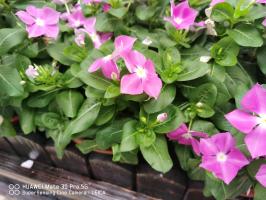Introduction
Plant biomass is a term that refers to the total amount of living or once-living matter present in plants. It is a valuable resource for many applications, including energy production, agricultural practices, and industrial processes. In this article, we will explore the concept of plant biomass in greater detail, including its significance, types, and applications.
Types of Plant Biomass
There are two main types of plant biomass: aboveground biomass and belowground biomass. Aboveground biomass includes all the living matter present in the aboveground parts of plants, such as leaves, stems, and branches. Belowground biomass, on the other hand, includes all the living matter present in the roots of plants.
Significance of Plant Biomass
Plant biomass is important because it is a renewable and sustainable resource. It is also a source of energy that can be used in place of non-renewable resources such as fossil fuels. Furthermore, plant biomass can also be utilized in various industrial processes, such as the production of paper, textiles, and chemicals.
Applications of Plant Biomass
One of the most common applications of plant biomass is energy production. The process of converting plant biomass into energy involves the burning of organic matter to produce heat, which is then used to generate electricity. This is known as biomass energy, and it is considered a clean and sustainable alternative to traditional energy sources.
Another application of plant biomass is in agricultural practices. The use of plant biomass as a fertilizer can help to improve soil health and increase crop yields. Additionally, plant biomass can also be used as feedstock for the production of biofuels, such as ethanol and biodiesel.
Plant biomass can also be used in industrial processes. For example, lignocellulosic biomass, which is a type of plant biomass that contains lignin and cellulose, can be used in the production of bio-based chemicals such as succinic acid and levulinic acid. Plant biomass can also be utilized in the production of bio-based materials such as bioplastics and composite materials.
Conclusion
In summary, plant biomass is a valuable resource that can be used in many different applications, including energy production, agricultural practices, and industrial processes. As the demand for renewable and sustainable resources continues to increase, plant biomass is becoming an increasingly important part of the solution. By utilizing plant biomass in a responsible and sustainable manner, we can help to ensure a better future for ourselves and for future generations.

 how many times do yo...
how many times do yo... how many planted tre...
how many planted tre... how many pine trees ...
how many pine trees ... how many pecan trees...
how many pecan trees... how many plants comp...
how many plants comp... how many plants can ...
how many plants can ... how many plants and ...
how many plants and ... how many pepper plan...
how many pepper plan...































